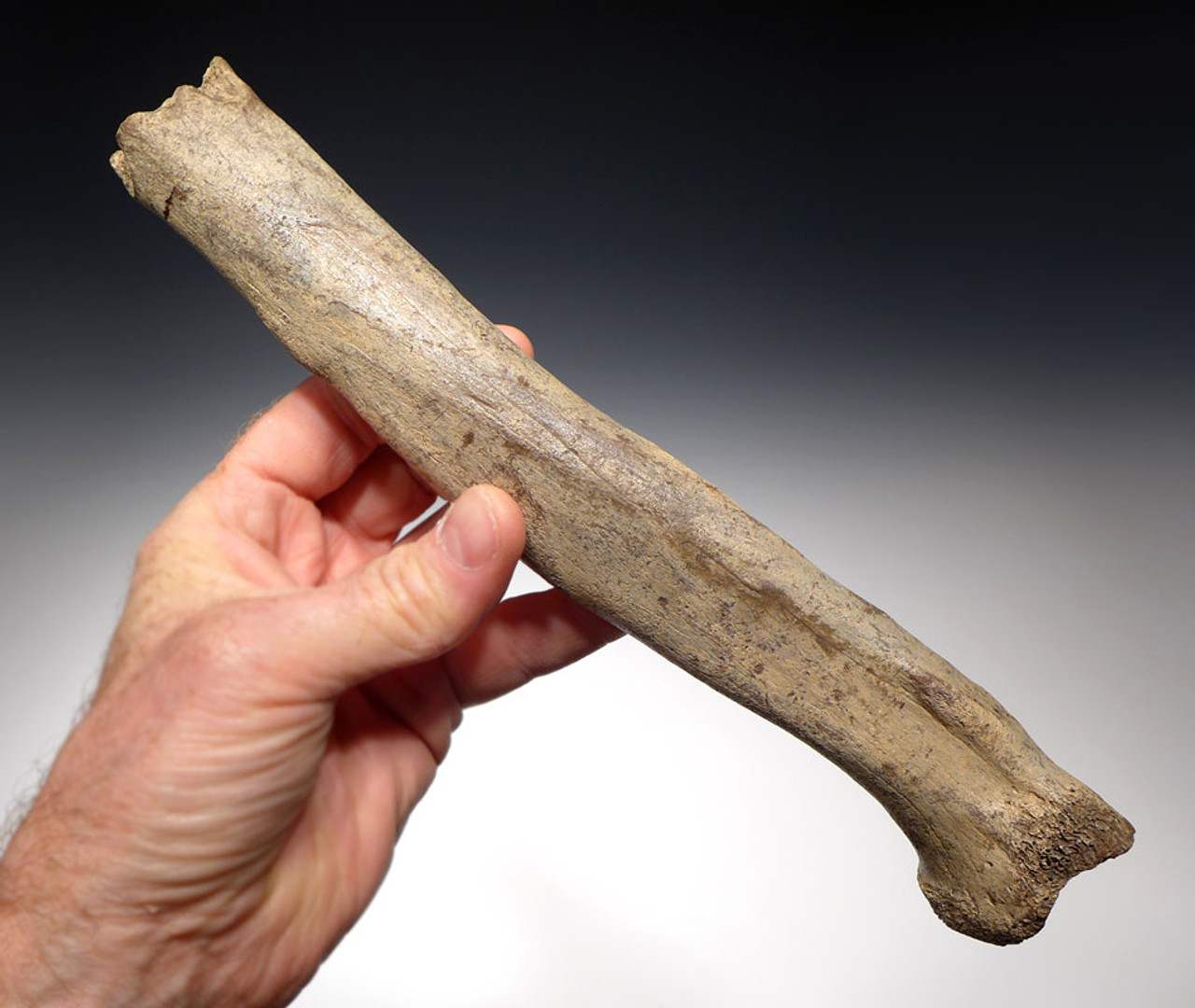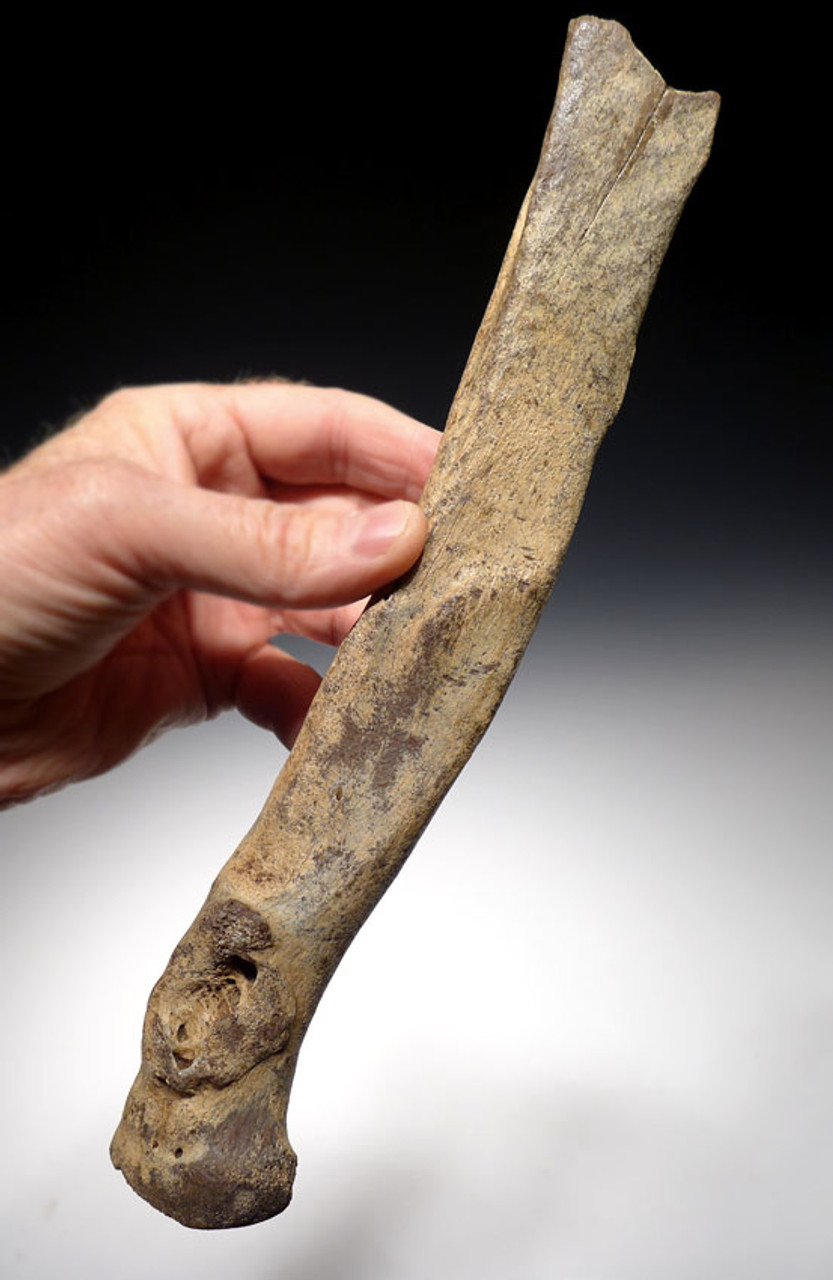Product Description
ID
|
Panthera leo spelaea
|
||
FOUND
|
River Gravel Deposit - Central Europe
|
||
AGE
|
PLEISTOCENE: 250,000 - 10,000 years ago
|
||
SIZE
|
10.5" long
|
||
CONDITION
|
NO REPAIR OR RESTORATION. ONE END
|
||
NOTE
|
EUROPEAN CAVE LION FOSSILS ARE AS IF NOT
|
||
Actual Item - One Only
Comes with a certificate of authenticity / information sheet |
|||
To label fossils of the European Cave Lion (Panthera leo spelaea) as "RARE" is an understatement, to say the least. The material is infinitely more rare than the most famous large prehistoric cat fossils of the Americas - Smilodon fatalis, which continue to fetch world-record prices in the public market. The absence of European Ice Age mega-predator fossils remains in the market underscores the sheer rarity of such material compared to more prevalent Smilodon material on American markets.
This is a rare arm bone (radius) of the European Cave Lion (Panthera leo spelaea). This extremely robust limb bone is impeccably well-preserved and complete except for the proximal joint end. The bone is INTACT with otherwise, perfect preservation. The bone has been completely cleaned and conserved in our on-site lab and is intact as it was found with NO REPAIR AND NO RESTORATION. Any and all fossil remains of the European Cave Lion are EXTRAORDINARILY RARE but major post-cranial remains such as a primary limb bone can be considered a once-in-a-lifetime find. Recent scientific studies reveal a fascinating and brutal former world that existed in the last Ice Age of Europe where Cave Hyenas and Cave Lions hunted and fed on each other as well as Cave Bears and even humans such as Neanderthals and Cro-Magnons.
The European Cave Lion (Panthera leo spelaea) first appeared in Europe around 500,000 years ago and lived up to the near close of the last European Ice Age. They coexisted with primitive humans such as Neanderthals and Cro-Magnon man and prehistoric European cave paintings (SEE BOTTOM OF THIS PAGE) have been found depicting these beasts as well as Paleolithic ivory carvings and clay figures. Artifact evidence suggests these animals were worshipped and on rare occasion, hunted by prehistoric man.
The European Cave Lion was larger than most living cats today and grew to average weights and lengths meeting or exceeding the largest ever recorded Siberian Tiger in modern time. The overall head/body length averaged 11.5 feet with males weighing in at 880 pounds! This massive predator appeared more like a mix between a lion and a tiger with very robust features. Prehistoric art gives us a rare glimpse of what these creatures looked like when alive. The European Cave Lion had protruding ears, little to no mane, faint tiger-like stripes and a tufted tail. Typical prey included mammals such as horse, boar and deer. Paleolithic cave deposits made by human habitation indicates these animals were also hunted by prehistoric man. Without a doubt, the ultimate "bragging rights" went to the Neanderthal or Cro-Magnon who would have been able to kill one of these deadly monsters with only wood and stone weapons!
This fossil would also make a great compliment to a primitive man stone tool and weapon collection as they lived alongside each other at one point in history and were hunted and revered by both Neanderthal man and Cro-Magnon man.
 US DOLLAR
US DOLLAR
 EURO
EURO
 AUSTRALIAN DOLLAR
AUSTRALIAN DOLLAR
 CANADIAN DOLLAR
CANADIAN DOLLAR
 POUND STERLING
POUND STERLING














